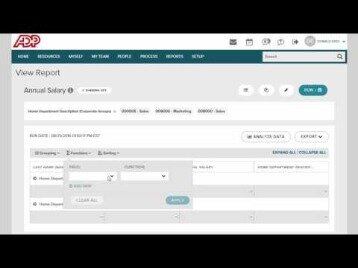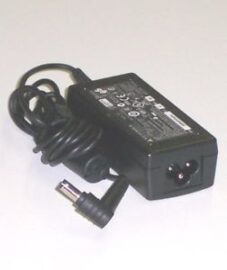
Examples of your current liabilities include accounts payable, bills payable, and outstanding expenses. Besides this, you should also understand how these current assets can be financed. Accordingly, you should not invest in current assets excessively as it impacts your firm’s profitability. This is because cash remaining idle would earn nothing for your business. Likewise, inadequate investment in current assets could threaten the solvency of your business.
However, this can be difficult when customers are large and powerful. Another options is to be more active in collecting outstanding accounts receivable, though there is a risk of annoying customers when collection activities are overly aggressive. A third option is to engage in just-in-time inventory purchases to reduce the inventory investment, though this can increase delivery costs. You might also consider returning unused inventory to suppliers in exchange for a restocking fee. Or, consider extending the number of days before accounts payable are paid, though this will likely annoy suppliers. Extending the payable days is most effective when you can offer volume purchases in exchange.
Positive vs. Negative Working Capital
NWC shows the difference between a company’s current assets and current liabilities, and the remaining dollar amount is the company’s working capital for the immediate future. The net working capital ratio is nothing but a percentile representation of a company’s current assets and liabilities. While NWC is calculated by subtracting current assets and current liabilities, the ratio is can be arrived at by dividing assets by liabilities. This ratio, similar to NWC, helps determine whether your company has enough current assets to cover the liabilities.
Net working capital, conversely, goes one step further by considering your business’s current liabilities as well. The change can show you if your short-term business assets are increasing or decreasing in relation to your short-term liabilities. Suppose you’re running a business that began last year with $500,000 in current assets and $300,000 in current liabilities, resulting in a working capital of $200,000. Your business has grown its current assets to $700,000, and current liabilities have increased to $350,000.
Conversely, a ratio under 1.0 shows that liabilities exceed assets, which could signal potential financial troubles. Understanding your business’s financial health is essential, but the terminology can sometimes feel overwhelming. However, the more practical metric is net working capital (NWC), which excludes any non-operating current assets and non-operating current liabilities.
Invest Smarter with The Motley Fool
Typically, other current assets and liabilities represent a relatively small portion of a company's assets and liabilities. Hence, they won't impact working capital as much as accounts receivable or payable. Traditionally, fixing the "match" companies do not access credit lines for more cash on hand than necessary as doing so would incur unnecessary interest costs. However, operating on such a basis may cause the working capital ratio to appear abnormally low.
- It’s about striking the right balance between safety and growth, stability and ambition, the present and the future.
- The sum of monthly payments of long-term debt, such as commercial real estate (CRE) loans and small business loans, which will be made within the next year are also considered current liabilities.
- The amount of working capital your business has will often depend on the industry you operate in.
- First, time is an important factor that you need to consider while managing your fixed assets.
- On the other hand, a negative NWC means that a company will typically need to borrow or raise money to remain solvent.
In other words, a company’s ability to meet short-term financial obligations. Beyond that, calculating NWC requires looking at current or liquid assets, but not all current assets are equally liquid. For example, inventory is a liquid and current asset, but it can take a long time to sell inventory — it isn’t a reliable source of cash to pay off short-term debts.
Understanding Working Capital
That is whether you have sufficient funds to run your business operations in the short-term. Generally, it is bad if a company's current liabilities balance exceeds its current asset balance. This means the company does not have enough resources in the short-term to pay off its debts, and it must get creative in finding a way to make sure it can pay its short-term bills on time. A short-period of negative working capital may not be an issue depending on a company's place in its business life cycle and if it is able to generate cash quickly to pay off debts.
A business may wish to increase its working capital if it, for example, needs to cover project-related expenses or experiences a temporary drop in sales. Tactics to bridge that gap involve either adding to current assets or reducing current liabilities. The balance sheet lists assets by category in order of liquidity, starting with cash and cash equivalents. It also lists liabilities by category, with current liabilities first followed by long-term liabilities.
Sell Some Long-term Assets for Cash.
Net working capital (NWC) is also referred to as working capital and is a way to measure a company’s ability to pay off short-term liabilities. NWC is often used by business owners and accountants to quickly check a company’s financial health at any given moment. Now, say for example your company has a short-term loan of INR 15,000, accounts payable of INR 8,000, and accrued liabilities of INR 4,000. Sum of all these will give us the total current liabilities that we will consider to calculate NWC (net working capital).

You’ll use the same balance sheet data to calculate both net working capital and the current ratio. Net Working Capital (NWC) measures a company’s liquidity by comparing its operating current assets to its operating current liabilities. Current assets are the assets that can be converted into cash within a short period of time, typically one year. Such assets include cash, short-term securities, accounts receivable, and stock. It can provide information on the short-term financial health of a company. Business executives usually aim for a positive net working capital, where current assets exceed current liabilities.
Create an accounts receivable aging schedule each month that lists the dollar amounts you’re owed based on the invoice date. For example, automating payment processing will keep invoices top of mind for customers and increase the likelihood that they will pay promptly. These two ratios are also used to compare a business’s current performance with prior quarters and to compare the business with other companies, making it useful for lenders and investors. The inventory turnover ratio indicates how many times inventory is sold and replenished during a specific period.
The amount of net working capital a company has available can be used to determine if the business can grow quickly. With substantial cash in its reserves, a business may be able to quickly scale up. Conversely, if the business has very little in cash reserves, then it's highly unlikely that the company has the resources to handle fast-paced growth. Since the company is holding off on issuing payments, the increase in payables and accrued expenses tends to be perceived positively. While A/R and inventory are frequently considered to be highly liquid assets to creditors, uncollectible A/R will NOT be converted into cash. In addition, the liquidated value of inventory is specific to the situation, i.e. the collateral value can vary substantially.
As stated earlier, the Net Working Capital is the difference between the current assets and current liabilities of your business. Any change in the Net Working Capital refers to the difference between the Net Working Capital of two executive accounting periods. Your business must have an adequate amount of working capital to survive and perform its day-to-day operations. Many industries have a higher percentage of current assets relative to the total assets on their balance sheet. This is important because a weak liquidity position is a threat to your business’s solvency. Therefore, make sure you employ a judicious mix of short-term and long-term funds to fund your current assets.
It’s vital to work with suppliers and financiers to win better payment terms. Understanding net working capital calculation results is a key issue with relying on NWC as a financial health metric. Ultimately, NWC does not account for lines of credit a company may have access to or recent large investments and purchases a company makes.
SELECT WATER SOLUTIONS ANNOUNCES SECOND QUARTER ... - PR Newswire
SELECT WATER SOLUTIONS ANNOUNCES SECOND QUARTER ....
Posted: Wed, 02 Aug 2023 20:15:00 GMT [source]
An additional layer to the significance of working capital management lies in the balancing act it requires. On one side of the scale, we have the need to maintain liquidity and ensure that short-term debts can be paid promptly. On the other side, a company wants to maximize the use of its resources for growth and expansion. Cash management and the management of operating liquidity is important for the survival of the business. A firm can make a profit, but if it has a problem keeping enough cash on hand, it won't survive.
